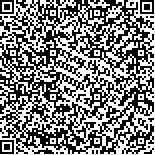| This article has been:Browse 815Times Download 1349Times |

scan it! |
|
|
| DOI:10.13522/j.cnki.ggps.2024181 |
|
| Assessing rainfall forecast accuracy and optimizing water-saving irrigation strategies for rice production in Inner Mongolia |
|
CHENG Ruiping, LIN En, XU Yang, ZHAO Zhiqiang, ZHANG Ce,
HU Xuhua, CUI Yuanlai, LUO Yufeng
|
|
1. State Key Laboratory of Water Resources and Hydropower Engineering Science, Wuhan University,
Wuhan 430072, China; 2. Inner Mongolian Research Institute on Hydraulic Sciences, Hohhot 010060, China;
3. Water Conservancy Bureau of Jalaid Banner, Inner Mongolia, Xing’an League 137600, China;
4. Xing’an League Flood Control and Drought Relief Dispatching Center, Xing’an League 137400, China
|
| Abstract: |
| 【Objective】Accurate short-term rainfall forecasts are crucial for improving irrigation management and water use efficiency, especially in water-scarce regions. This study evaluates the accuracy of rainfall forecast models and in-vestigates their potential to enhance irrigation strategies.【Method】The study was conducted in Jalaid Banner, Zhalantun City, and Arshan City in Inner Mongolia. Rainfall data from 2016 to 2020, collected during the repro-ductive period of single-season rice, were used to develop and test the model. Metrics including accuracy, missing alarm rate, false alarm rate, TS score (threat score), and ROC (receiver operating characteristic curve) were used to evaluate the rainfall forecast accuracy. Based on the results, a water-saving irrigation strategy was proposed and analyzed.【Result】① The overall accuracy of rainfall forecasting during the rice growing season was 69.5%. The TS score increased with rainfall intensity. Both the false alarm rate and the missing alarm rate were higher when rainfall was less frequent. ② The true positive rate consistently exceeded the false positive rate for 1 to 7 day rainfall forecasts, making it useful for irrigation management. ③ The accuracy of rainfall forecasts during the rice greening period ranged from 70.8% to 76.7%, which is sufficiently accurate for irrigation management. Rice was most sensitive to water stress during the early tillering, late tillering, jointing, booting, and heading-flowering stages. During these periods, irrigation was necessary if no or limited rainfall was forecasted to meet crop water requirements. Rice was less sensitive to water stress during the milk ripening and yellow ripening stages, with irrigation needed only if rainfall fell below a certain threshold. The forecasting model performed better for predicting moderate and heavy rainfall events. 【Conclusion】Compared to double-season rice in Southern China, the rainfall frequency for single-season rice in Northern China is lower, with moderate and heavy rainfall events being forecasted with reasonable accuracy. These forecasts can be used to improve irrigation management strategies in this region. |
| Key words: northern rice; rainfall forecast; water conservation; irrigation decision |
|
|